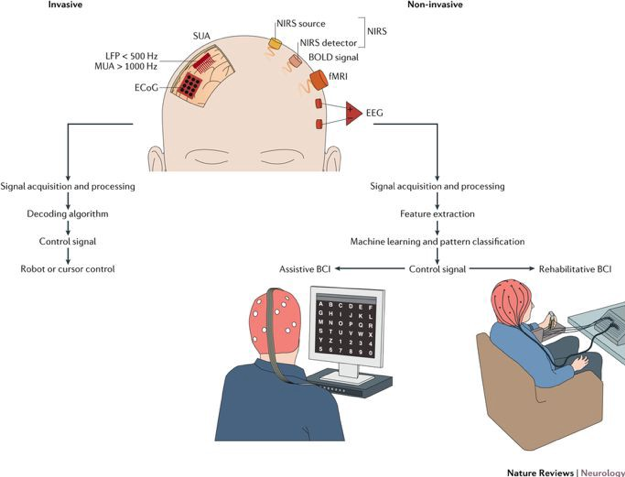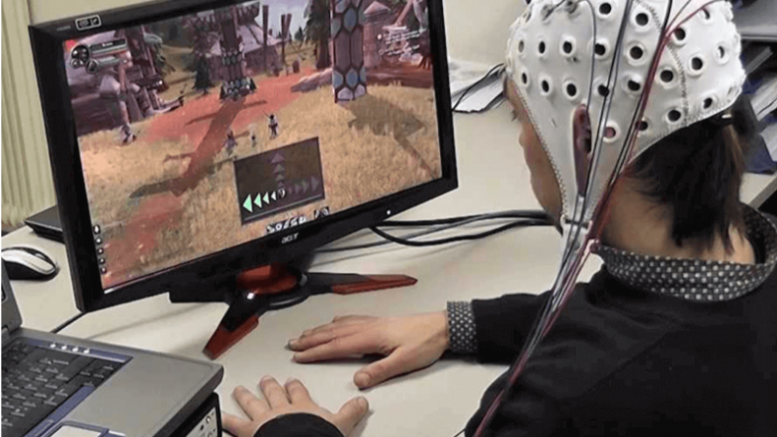You may have already heard about a system that creates a communication pathway between a functional brain and a peripheral electronic device like a computer. These systems are called brain computer interfaces (BCI). Brain computer interface systems record brain signals from the surface of the cortex, through a signaling device implanted within the brain or alternatively from the sensors placed over the scalp. The intercepted signals are transmitted to the connected peripheral device that allows the user of the system to perform numerous tasks. With the help of BCI systems paralyzed and handicapped individuals can overcome their physical challenges and are able to perform various tasks they couldn’t do without the system. The application area of BCI systems reaches from healthcare over smart home control to entertainment and gaming.
There are three different types of BCI systems which are the non-invasive, the semi-invasive and the (full) invasive. According invasive techniques specific devices are used to capture brain signals by inserting these devices directly into the human brain by surgery. In semi-invasive techniques devices are inserted into the skull over the human brain. Non-invasive techniques are considered the safest and most affordable type of devices. They can only capture “weaker” human brain signals due to the obstruction of the human skull. The detection of the brain signals is achieved by the help of electrodes placed on the scalp.

A major part of BCI research is focused upon controlling devices and appliances by brain activitiy. This allows the application of BCI within a vast technical scope. For example regarding military or medical operations, search and rescue operations or catastrophe management. But even within the gaming industry this kind of technology gets more and more common. A BCI-software is able to “translate” commands from EEG(=Electroencephalography)-data into commands for the video game. While gaming based on BCI-technology players often wear EEG-headsets to controll virtual objects, characters or situations. Instead of traditional gaming controllers, mouses or keyboards movements and actions are navigated by mental commands only –character commands like moving in a certain direction, leaping or shooting. These mental commands are processed by EEGs and accordingly converted into actions within the virtual-reality-game. In the near future BCI will be able to bring foward some very promising achievements in the area of gaming. Some researchers used the BCI-application for quite famous games like “World of Warcraft”, “Pacman”, “Pinball” and “Tetris”. Not only the number of prospective users and consumers of BCI-games is relatively large, there is also a huge potential for more commercial economy. At present –in comparison with regular games – most of the BCI-Games aren´t able to pass the on-road-test: precision and pace are unfortunately insufficient.

Nevertheless it is quite important to talk about the critical aspects regarding BCI and its technology as well. It is necessary to illuminate the ethical dilemma according BCI, too. So first of all there is the question of responsibility for actions when humans AND machines are involved in acts or processes. Currently experts and critics discuss the privateness of thoughts and brain signals. In terms of BCI the world of science works with very personal data that requires a high level of information sensitivity. In addition to that technical devices might misinterpret brain signals or activity with an incorrect outcome. Even for the legal system BCI-technologies come with certain new challenges. Internationally acknowledged neuroscientists call for ethical and legal guidelines. Unnatural enhancements of the human nature –mentally or physically – for instance require a very close look in terms of certain legal and ethical matters.
A text by Sieglind Riedel, Sascha Renz , Jenny Franz und Jana Leitner

